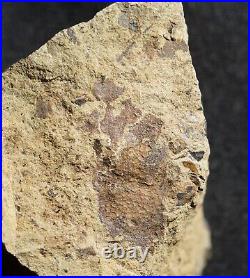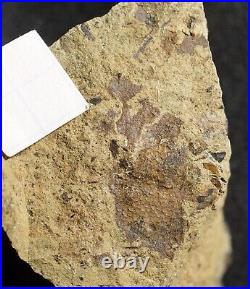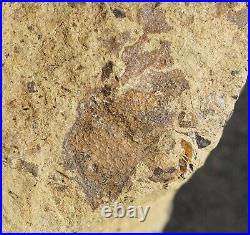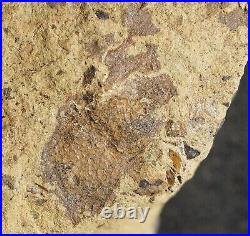Museum complete rare big Silurian enigmatic earliest know Parka sp. Land plant













Museum quality, extremely rare, huge specimen of an still very enigmatic. Poland, Holly Cross Mountains, Kielce area. Upper Silurian, (Ludlowian / Pridolian).
4,0 x 3,5 x 1,5 cm (white square on pictures is 1,0 x 1,0 cm). Parka belongs to a group of enigmatic plants, which conquered the land at about the same time as higher plants (like Cooksonia) did.
Other members of this group are Nematothallus, Pachytheca and Nematoplexus. All plants of these group became extinct during the Devonian. The most famous Silurian land plant is a small creature sized up to a couple of centimeters, named.
It is not only the best-known plant, but up to now also the oldest one. Fossils is difficult because only a few occurrences are known (marine, delta of river deposits from the Late Silurian and the earliest Devonian). The small size of the plant is also a disadvantage for finding. A rather complete plant is very rare. Is an extinct grouping of primitive land plants.
Date from the middle of the Silurian (the Wenlock epoch) the group continued to be an important component of the flora until the end of the Early Devonian, a total time span of 433 to 393 million years ago. Fossils are distributed globally, most type specimens come from Britain, where they were first discovered in 1937.Includes the oldest known plant to have a stem with vascular tissue and is thus a transitional form between the primitive non-vascular bryophytes and the vascular plants. Specimens occur in a range of sizes, and vary in stem width from about 0.03 mm to 3 mm. Specimens of different sizes were probably different species, not fragments of larger organisms: fossils occur in consistent size groupings, and sporangia and spore details are different in organisms of different sizes. The organisms probably exhibited determinate growth i. Stems did not grow further after producing sporangia.
